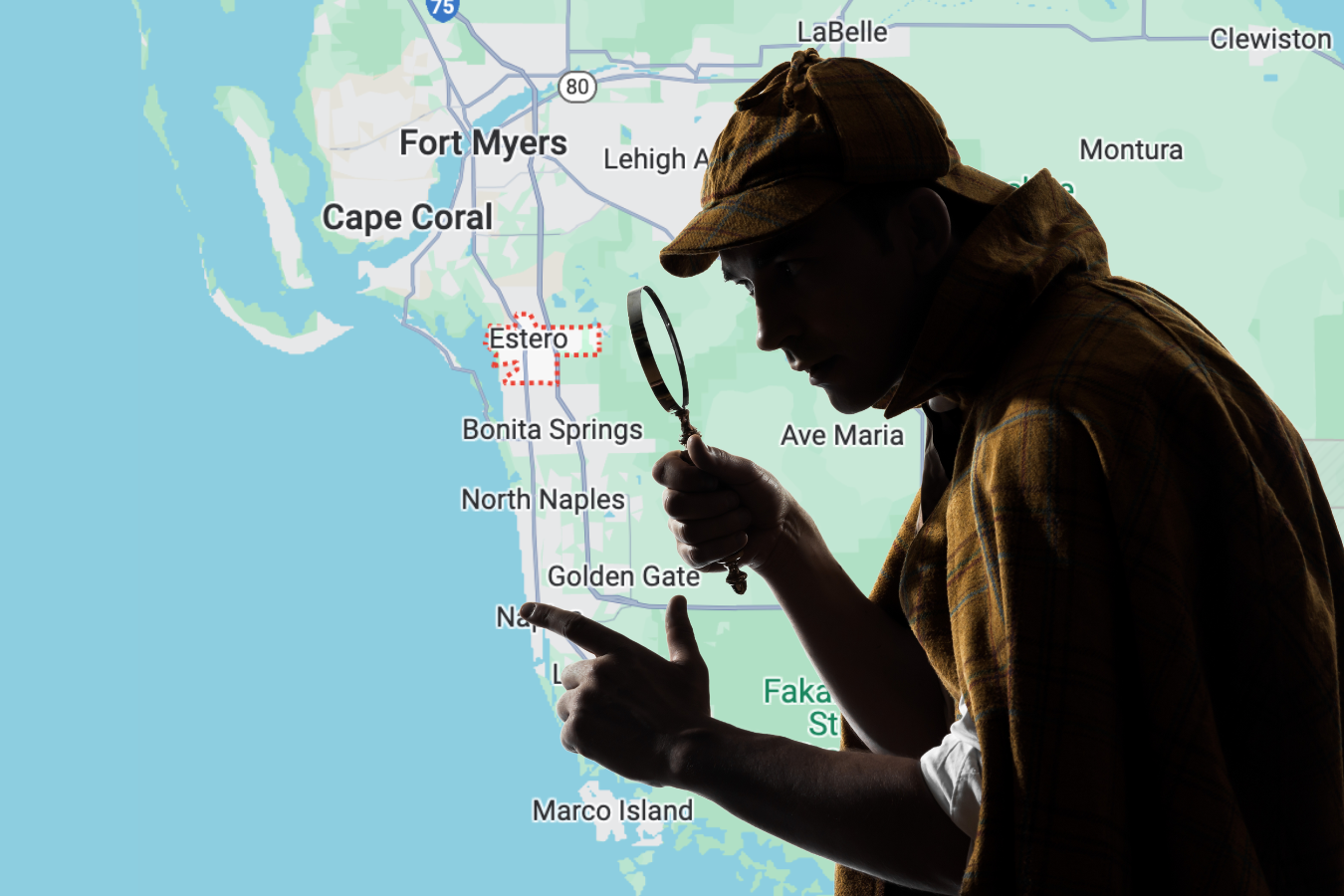It takes a long time to really get to know a city. If you’re like me, first you want to know all of the best restaurants. After a while, you start to wonder about zoning districts and future restaurants. And the more you get to know your new hometown, the more you wonder about its quirky past.
It turns out that Estero, Florida is full of quirks. After all, how many towns can you say were founded by a cult?
Check out some of my favorite fun facts about Estero, Florida. Make sure to add your own trivia to the comments section below!
1. Estero gets it name from its geographical attributes
Estero translates from the Spanish to “estuary,” or where the river meets the sea. Long before Estero catered to gated communities and golf courses, it was a collection of settlements built around the Estero River. We’re talking way before mosquito control, mind you.

That river feeds into the Estero Bay Aquatic Preserve. From there, it flows between barrier islands and out into the Gulf of Mexico. The health of both the river and bay impacts everything from the village’s economy to its ecosystem.
Like everyone else, I’m eager for trendy restaurants to come to Estero. But I’m also a firm believer that we have to do everything we can to protect our water supply.
See how you can help protect our waterways. It takes a village (of Estero) to keep Southwest Florida beautiful.
2. Estero was founded by a cult
While the history of Estero goes all the way back to the Calusa natives who forged tools from scavenged seashells, the indigenous population was sadly wiped out by the time the first homesteaders arrived.
Speaking of the first homesteaders, Gustave Damkohler settled along the Estero River in 1882 to raise honeybees and grow silkworms. But things took a turn for the weird in 1894 when Damkohler fell for the charismatic charms of a man named Dr. Cyrus R. Teed.

He transferred his lands to Teed and the The Koreshan Unity. Now, the Koreshans were pretty advanced for their times. They believed in racial and gender equality, for one. They also valued education and innovation. Sounds idyllic right?
Well, they also believed that they were living in core of the earth. And in total abstinence.
There’s just one problem with total abstinence. Your population eventually declines. The last four surviving Koreshan members deeded over 300 acres of their land to the state of Florida in 1961. Thanks to them, residents today can enjoy the pristine beauty of Koreshan State Park.

Of course, you’ll want to visit the park for more than just the nature. It’s easy to feel like you stepped through a time machine back to the late 1800s. Trust me.
3. Estero took a while to make things official
By 1904, the Town of Estero was booming. They had everything from a town seal and a mayor to nine council members.
But by 1907, Lee County politicians abolished the town thanks to anti-Koreshan sentiment. Or, that was one reason. They also wanted to keep the local road-tax revenues in their hometown of Fort Myers.
The Koreshan leader, Teed, found himself in the thick of things on October 1906. A business trip to Fort Myers turned violent, and he suffered serious injuries that plagued him until his death two years later.

Perhaps the Koreshans could have recovered, but that pesky celibacy got in the way. The community numbers dwindled, and Fort Myers prospered in the mean time.
In fact, Estero didn’t officially become its own village until December of 2014 – over a hundred years later. I wonder what Teed would think of the recent Estero population boom. But that’s for a another fun fact later on.
4. Estero is much smaller in size than it used to be
In addition to being founded by the Koreshans, Estero has another claim to fame. Back in the day (1904 to be precise), the Town of Estero spanned over 100 square miles, making it the largest city in Florida. Today, incorporated Estero is only 25-square miles.

Well, nothing lasts forever as I like to say. Which is why it’s more important than ever to seize the day and enjoy that margarita by the pool.
5. A big part of Estero is still unincorporated
If you live on East Corkscrew Road, you might be surprised to learn that your Estero address doesn’t equal a vote in municipal elections. Unincorporated residents are not represented by the village government; they’re represented by the county.
So what does this mean? Well unincorporated residents get the following mixed bag of treats:
• Lower property taxes
• No city resources available

As the Estero population continues to grow, there’s a good chance parts of East Corkscrew will become incorporated down the road. And the population IS growing.
As Michael Widner, an archivist for the Koreshan State Historic site, told New-Press, “We kid and say Teed was right about 10 million people moving to Estero. They just won’t be Koreshans.”
Know a fun fact about Estero? Make sure to leave it in the comments!



Comments
One response to “5 Interesting Facts About the Village of Estero That You Need to Know”
This was a very interesting read! Thanks for sharing.